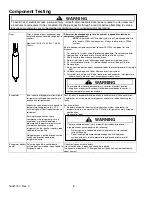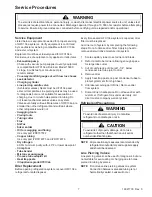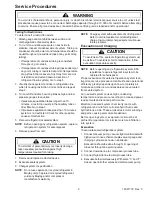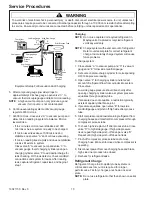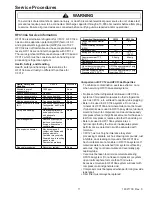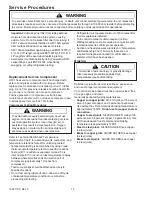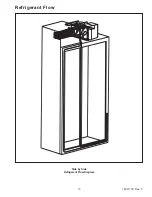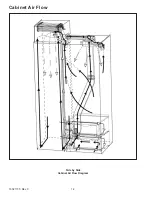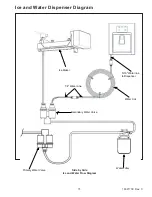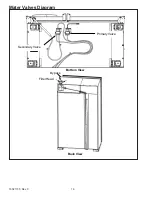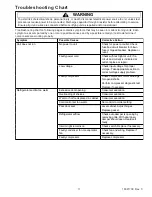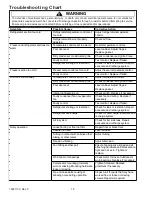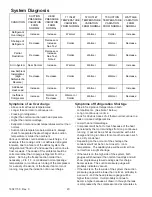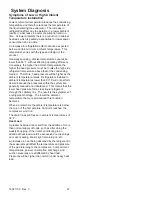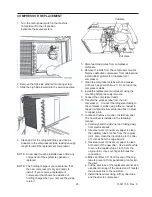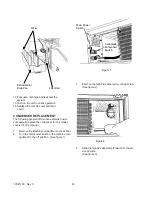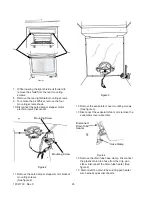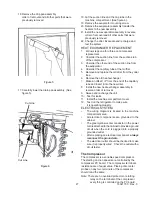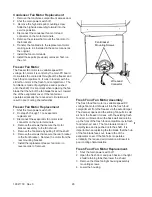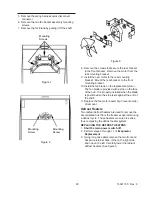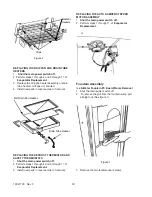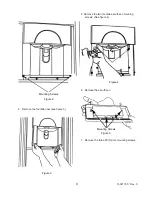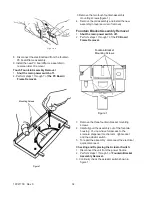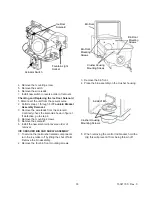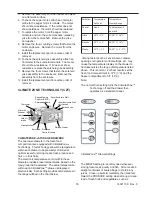
16021730 Rev. 0
20
System Diagnosis
CONDITION
SUCTION
PRESSURE
VARIATION
FROM
NORMAL
HEAD
PRESSURE
VARIATION
FROM
NORMAL
T1 INLET
TEMPERATURE
VARIATION
FROM NORMAL
T2 OUTLET
TEMPERATURE
VARIATION
FROM NORMAL
T3 SUCTION
TEMPERATURE
VARIATION
FROM NORMAL
WATTAGE
VARIATION
FROM
NORMAL
Refrigerant
Overcharge
Increase
Increase
Warmer
Warmer
Colder
Increase
Shortage of
Refrigerant
Decrease
Decrease or
Increase
See Text
Colder
Warmer
Warmer
Decrease
Partial
Restriction
Decrease
Decrease or
Increase
See Text
Note 2
Colder
Warmer
Warmer
Decrease
Air in System
Near Normal
Increase
Warmer
Warmer
Warmer
Increase
Low Ambient
Installations
(High
Ambients the
Reverse)
Decrease
Decrease
Colder
Warmer
Warmer
Decrease
Additional
Heat Load
Increase
Increase
Warmer
Warmer
Warmer
Increase
Inefficient
Compressor
Increase
Normal or
Decrease
Warmer or
Colder
Warmer
Warmer
Decrease
Symptoms of an Overcharge
Above normal freezer temperatures.
Longer than normal or continuous run.
Freezing in refrigerator.
Higher than normal suction and head pressure.
Higher than normal wattage.
Evaporator inlet and outlet temperatures warmer than
normal.
Suction tube temperature below ambient. Always
check for separated heat exchanger when suction
temperature is colder than ambient.
Various conditons could indicate an overcharge. For
example, if the cooling coil is not defrosted at regular
intervals, due to a failure of the defrost system, the
refrigerant will "flood out" and cause the suction line to
frost or sweat. The cause of this problem should be
corrected rather than to purge refrigerant from the
sytem. Running the freezer section colder than
necessary (-2 to -1 F. is considered normal package
temperatures) or continuous running of the compressor
for a variety of reasons, or the freezer fan motor not
running, may give the indication of an overcharge.
Symptoms of Refrigeration Shortage
Rise in food product temperature in both
compartments. (See Note 1 below.)
Long or continuous run time.
Look for obvious traces of oil that would occur due to a
leak or cracked refrigerant line.
Lower than normal wattage.
Compressor will be hot to touch because of the heat
generated by the motor windings from long continuous
running. It will not be as hot as it would be with a full
charge and long run times for some other reason such
as a dirty condenser.
Depending on the amount of the shortage, the
condenser will not be hot, but closer to room
temperature. The capillary tube will be warmer than
normal from a slight shortage.
If the leak is on the high side of the system, both
gauges will show lower than normal readings and will
show progressively lower readings as this charge
becomes less. The suction pressure guage will
probably indicate a vacuum.
If the leak is on the low side of the system the suction
pressure guage will be lower than normal - probably in
a vacuum - and the head pressure gauge will be
higher than normal. It will probably continue to
become higher because air drawn in through the leak
is compressed by the compressor and accumulates in

